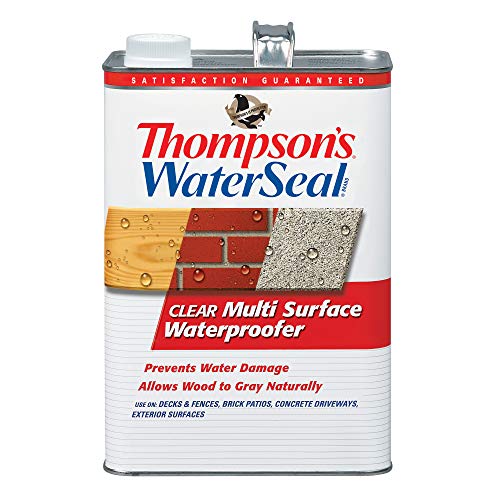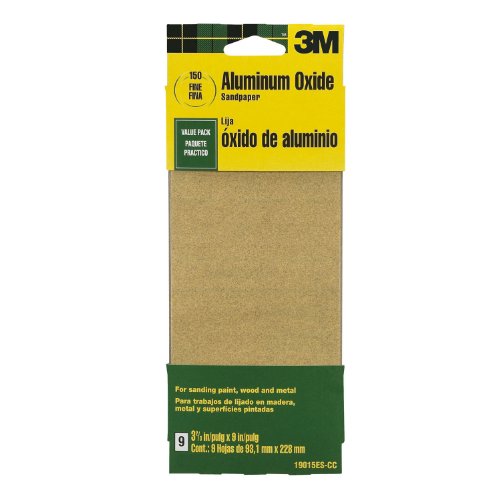
Prevent warping in reclaimed wood furniture with this step-by-step guide. Learn how to maintain the integrity of your furniture and make it last for years. Perfect for DIY enthusiasts and professional woodworkers alike.
Popular Picks for Sustainable Style
How to Prevent Wood Panels from Warping ► Avoid the Common Mistakes!
Choose the right reclaimed wood
When selecting reclaimed wood, follow these steps:
- Choose wood that has been properly dried to prevent warping.
- Look for wood with minimal moisture content.
- Avoid wood that shows visible signs of rot or damage.
Inspect for any existing warping
Inspecting for any existing warping is an important step before you start working with reclaimed wood. Begin by examining the wood from different angles and checking for any visible distortions or twists. Run your hand along the surface to feel for any unevenness or irregularities. For example, if you notice a board that is bowed in the middle, you can try placing it on a flat surface to see if it sits evenly. By carefully inspecting the wood and addressing any warping issues, you’ll ensure a smoother and more successful woodworking project.
Store the wood properly
To ensure that you store the reclaimed wood properly, make sure to place it in a well-ventilated area. Keep it away from direct sunlight and moisture to prevent warping. This will help maintain the moisture content of the wood.
Acclimate the wood
To acclimate the wood, follow these steps:
- Place the reclaimed wood in the room or area where it will be installed.
- Leave the wood to adjust to the temperature and humidity levels for at least 48 hours.
- Ensure the wood is stored in a flat, horizontal position to prevent warping.
- Keep the environment at a stable temperature and humidity level throughout the acclimation period.
- Once the wood has acclimated, you can proceed with your project, knowing that the risk of warping has been minimized.
Seal the wood
Apply a sealant to the reclaimed wood:
- Prepare the wood: Ensure that the reclaimed wood is clean and free from any dust or debris. Use a soft brush or cloth to remove any loose particles from the surface.
- Choose the right sealant: Consider the type of wood you are working with. For hardwoods like oak or mahogany, you may opt for an oil-based sealant, such as tung oil or Danish oil. For softwoods like pine or cedar, a water-based sealant like polyurethane or varnish would work well.
- Apply the sealant: Using a brush, sponge, or cloth, apply a thin and even layer of the chosen sealant to the wood surface. Make sure to follow the manufacturer’s instructions for application and drying times. Apply multiple coats if necessary, allowing each coat to dry completely before applying the next.
- Sand between coats (optional): If you desire a smoother finish, lightly sand the wood surface between each coat of sealant. Use a fine-grit sandpaper and wipe away any dust before applying the next coat.
By following these steps, you can effectively seal your reclaimed wood, protecting it from moisture and preserving its natural beauty for years to come.
Avoid extreme temperature changes
- Keep your reclaimed wood furniture away from sources of heat or cold, such as radiators or air conditioning vents.
- Avoid placing your furniture in direct sunlight or near windows where it can be exposed to extreme temperature changes.
- Use curtains or blinds to block out sunlight and regulate the temperature in the room.
- If you live in an area with high humidity, consider using a dehumidifier to prevent moisture damage to your wood furniture.
- In colder months, avoid placing your furniture near drafts or areas with poor insulation.
- Regularly monitor the temperature and humidity levels in the room where your furniture is located and make necessary adjustments to maintain a stable environment.
Use proper joinery techniques
When assembling your reclaimed wood furniture, use appropriate joinery techniques such as mortise and tenon or dovetail joints. These techniques provide strong, durable connections that can help prevent warping. For example, when joining two pieces of wood using the mortise and tenon technique, you will need to carefully cut a rectangular hole (mortise) in one piece and a corresponding projecting tongue (tenon) on the other piece. Then, simply fit the tenon into the mortise, ensuring a snug fit. Similarly, for dovetail joints, you’ll need to create interlocking, angled cuts on the edges of the two pieces of wood, resembling the shape of a dove’s tail. By following these joinery techniques, you’ll create furniture that not only looks beautiful but will also stand the test of time.
Allow for movement
To allow for movement in your reclaimed wood furniture, there are a few design and construction techniques you can use. First, when joining wood pieces, use techniques like breadboard ends or floating panels, which allow the wood to expand and contract without warping. Second, consider leaving small gaps between wood boards to accommodate movement. Lastly, avoid using glue or nails to secure the wood directly to the frame; instead, use brackets or clips that allow for slight movement. By incorporating these techniques, you can ensure that your reclaimed wood furniture stays beautiful and sturdy for years to come.
Regular maintenance
Regularly inspect and maintain your reclaimed wood furniture to keep it in top shape. Start by examining the furniture for any signs of warping or damage, such as cracks or scratches. If you notice any issues, address them promptly to prevent further problems. This may involve sanding down rough patches, applying a fresh coat of finish, or tightening any loose screws or joints. By staying on top of maintenance tasks, you can ensure the longevity and beauty of your reclaimed wood furniture.
Avoid excessive weight or pressure
- Avoid placing heavy objects on your reclaimed wood furniture.
- Be mindful of the weight you apply to your furniture, as excessive pressure can cause stress on the wood.
- This stress can eventually lead to warping and damage over time.
- To preserve the quality of your furniture, make sure to distribute weight evenly and avoid placing heavy items directly on the surface.
Keeping your furniture in shape
In conclusion, preventing warping in your reclaimed wood furniture is possible by taking a few simple steps. By selecting the right wood, storing it correctly, sealing it, and using proper joinery techniques, you can ensure the durability and longevity of your furniture. Additionally, regular maintenance and being mindful of excessive weight or pressure will help keep your furniture in excellent condition for many years. Follow these guidelines, and enjoy your beautiful reclaimed wood furniture for a long time to come!
What You’ll Need
Expert Advice
Getting Started with Reclaimed Wood Furniture
- Start by cleaning the furniture: Before using your reclaimed wood furniture, it’s important to clean it properly. Use a mild soap or a specialized wood cleaner to remove any dirt or dust. Avoid using harsh chemicals or abrasive materials that can damage the wood’s surface
- Protect the surface: Reclaimed wood furniture may have a more delicate surface compared to new furniture. To prevent scratches or stains, use coasters or placemats for drinks and trivets for hot dishes. It’s also recommended to use felt pads under items that might scratch the surface, like vases or decorative objects
- Maintain the wood: Reclaimed wood furniture often requires regular maintenance to keep its beauty intact. Apply a protective finish, like wax or oil, to nourish the wood and enhance its natural color and texture. This will also help protect it from moisture and other environmental factors. Follow the manufacturer’s instructions for the specific product you choose
- Avoid direct sunlight and extreme temperatures: Reclaimed wood furniture can be sensitive to intense sunlight and extreme temperatures. Keep your furniture away from windows or direct sunlight to prevent fading or warping. Also, avoid placing it near sources of heat or cold, like radiators or air conditioning units, as this can cause the wood to expand or contract
- Enjoy the unique character: One of the charms of reclaimed wood furniture is its unique character and history. Embrace the imperfections, such as knots, cracks, or nail holes, as they add to the furniture’s charm and story. Each piece is unique, so appreciate its individuality and the craftsmanship that went into creating it
- Remember, taking care of your reclaimed wood furniture will help it last for years and preserve its natural beauty. Enjoy using your furniture and appreciate the eco-friendly choice you’ve made!
Got questions about reclaimed wood furniture? We’ve got you covered!
Do you have any tips for incorporating reclaimed wood furniture into different interior design styles?
Absolutely! Here are some tips for incorporating reclaimed wood furniture into different interior design styles:
- Rustic Style: Reclaimed wood furniture is a perfect fit for rustic interiors. Look for pieces with weathered finishes and natural imperfections. Pair them with cozy textiles, warm colors, and vintage accents to create a charming, country-inspired look.
- Industrial Style: Embrace the raw and rugged beauty of reclaimed wood in an industrial interior. Choose furniture with distressed surfaces and exposed hardware. Combine it with metal elements, such as steel or iron, to achieve a warehouse-inspired aesthetic.
- Modern Style: Contrasting reclaimed wood furniture with sleek, minimalist designs can create a striking modern look. Opt for clean lines and simple forms to let the wood’s unique texture and character shine. Use neutral colors and keep the overall design minimalistic.
- Bohemian Style: In bohemian interiors, reclaimed wood adds an earthy and eclectic touch. Mix and match different wood finishes, patterns, and textures. Layer vibrant fabrics, colorful rugs, and global-inspired accessories to create a laid-back, boho vibe.
- Scandinavian Style: Reclaimed wood furniture can bring warmth and a cozy feel to Scandinavian design. Look for light-toned wood with clean lines and minimal ornamentation. Pair it with neutral colors, natural materials, and plenty of natural light for a clean and airy look.














